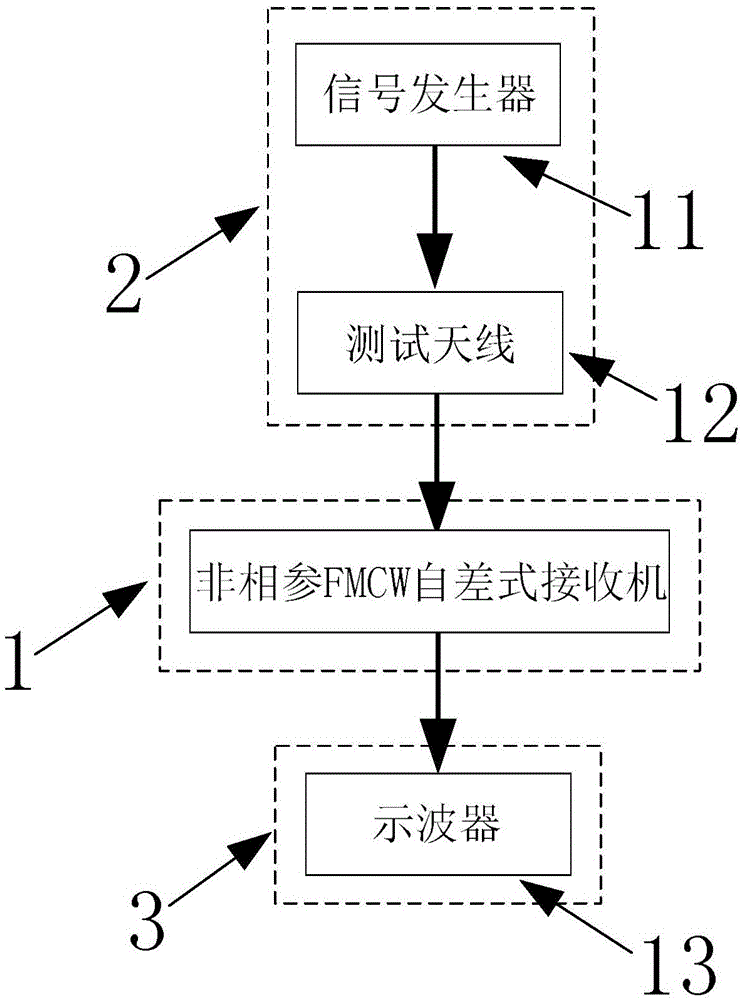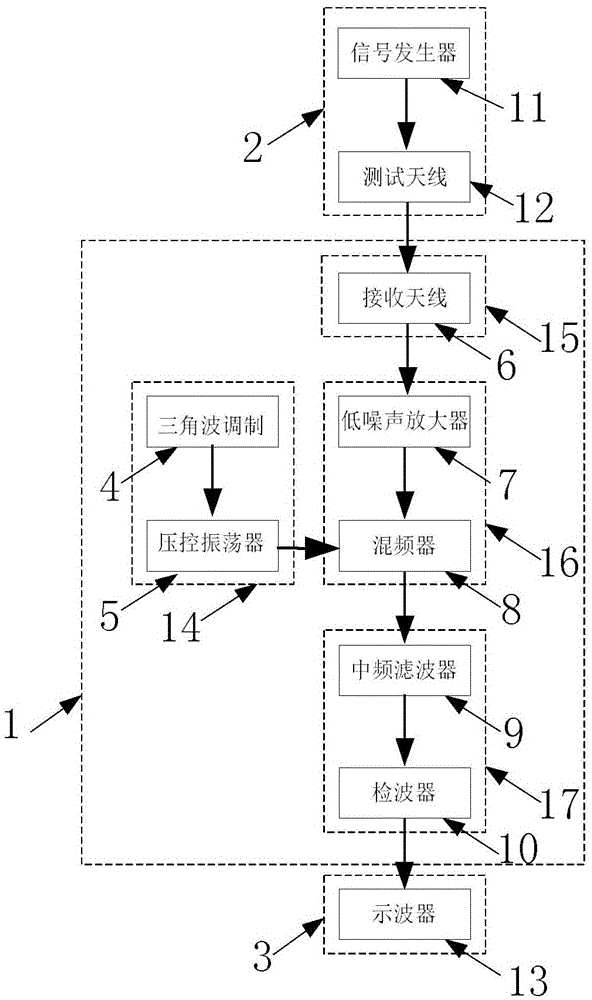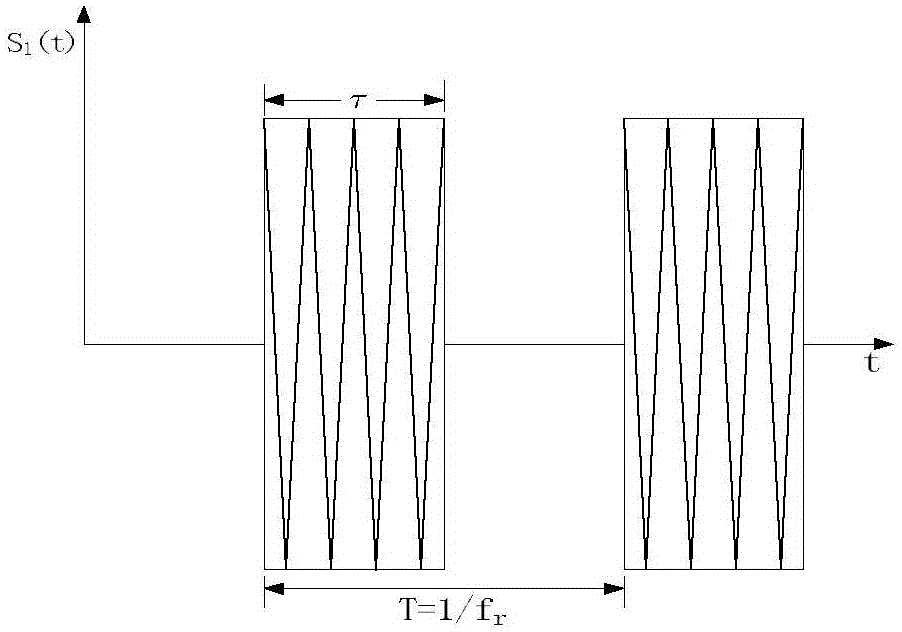Quantitative testing for sensitivity of a non-coherent FMCW autodyne receiver
A receiver sensitivity and self-differentiation technology, which is applied in the direction of receiver monitoring, etc., can solve the problems of unstable frequency of intermediate frequency signals, sacrifice the flexibility and versatility of the test system, increase the complexity of the test system, etc., and achieve the elimination of the frequency of intermediate frequency signals and amplitude instability, the test system is simple and reliable, and the effect of low test cost
- Summary
- Abstract
- Description
- Claims
- Application Information
AI Technical Summary
Problems solved by technology
Method used
Image
Examples
Embodiment Construction
[0032] The non-coherent FMCW autodifferential receiver sensitivity test method proposed by the present invention will be described in detail below in conjunction with the accompanying drawings and specific implementation steps.
[0033] refer to figure 1 . According to the present invention, at first standard signal generator 11 with internal pulse modulation function is set to internal pulse modulation mode, radio frequency f is set r =f A0 , The signal power covers the initial power of the minimum signal that can be received by the non-coherent FMCW self-differential receiver in actual operation, the power step value that meets the sensitivity test accuracy requirements, and sets the modulation pulse width τ and pulse period T; the standard The pulse modulation signal that signal generator 11 produces is as the test signal of above-mentioned non-coherent FMCW self-difference receiver, feeds in above-mentioned non-coherent FMCW self-difference receiver through test antenna ...
PUM
 Login to View More
Login to View More Abstract
Description
Claims
Application Information
 Login to View More
Login to View More - R&D
- Intellectual Property
- Life Sciences
- Materials
- Tech Scout
- Unparalleled Data Quality
- Higher Quality Content
- 60% Fewer Hallucinations
Browse by: Latest US Patents, China's latest patents, Technical Efficacy Thesaurus, Application Domain, Technology Topic, Popular Technical Reports.
© 2025 PatSnap. All rights reserved.Legal|Privacy policy|Modern Slavery Act Transparency Statement|Sitemap|About US| Contact US: help@patsnap.com



